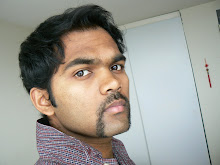SHOE HIM AWAY
 Muntazar Al-Zaidi started off a great new way of protest: Hurl your shoes and make your statement. Ever since the George Bush shoe throwing incident, Al-Zaidi has become a hero among muslims and in the middle east. This trend is now fast catching up in India with the election fever running high.
Muntazar Al-Zaidi started off a great new way of protest: Hurl your shoes and make your statement. Ever since the George Bush shoe throwing incident, Al-Zaidi has become a hero among muslims and in the middle east. This trend is now fast catching up in India with the election fever running high.India's home minister Chidambaram was the first to get a taste of journalists' ire when the reporter from Danik Jagran, Jarnail Singh, hurled his footwear at him. Congress leader Naveen Jindal also faced a boot thrown by a retired school teacher in Kurukshetra. Then, it caught up big time. The Indian prime minister while campaigning in Gujarat became the target of a soiled boot thrown by a student from the crowd. All the three politicians were from the congress party, and it appears that Congress party is literally facing the boot! BJP was also at the receiving end, when a drunk vagabond hurled a slipper at the Karnataka chief minister, Yediyurappa.
While "chappal garlands" are commonly used in effigies of political leaders to dishonour the person, these incidents suggest a more bolder in-your-face approach. With still about a good month's time before the elections get over we can be assured of many more shoe missiles. Narendra Modi is proposing a net barricade around his podium during his speeches. Clever thinking on a shoe-string budget, I would say.
Picture courtesy: rediff.com

